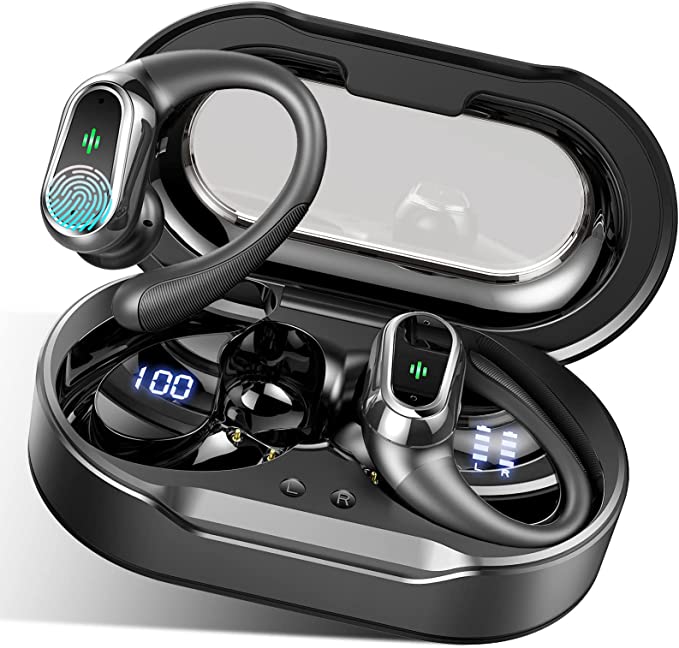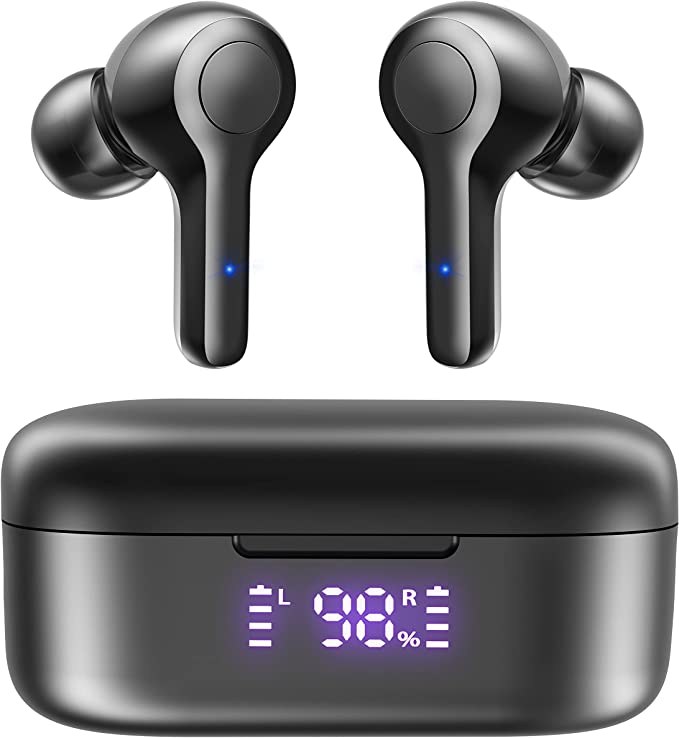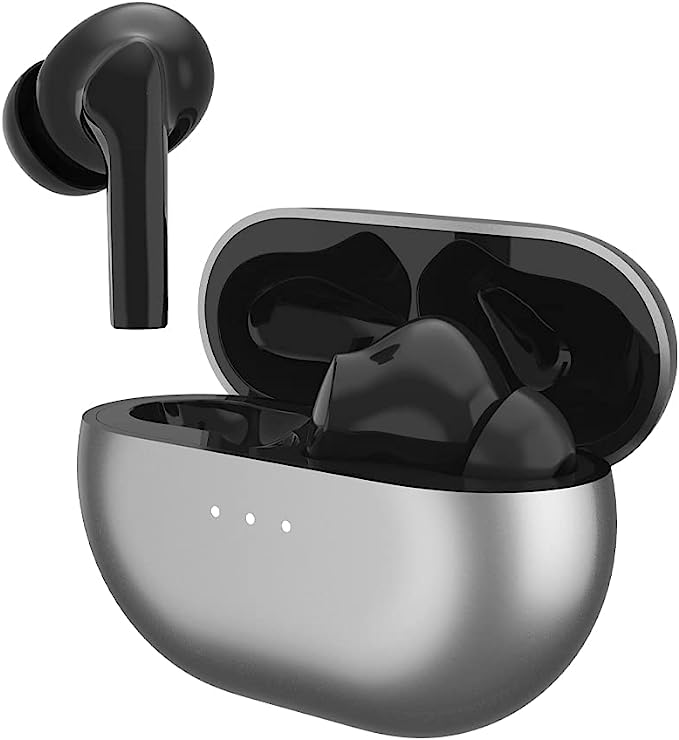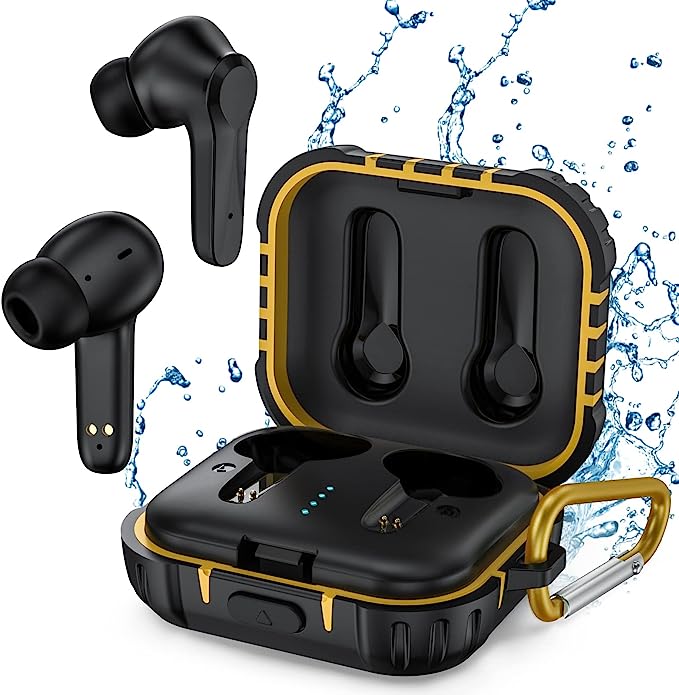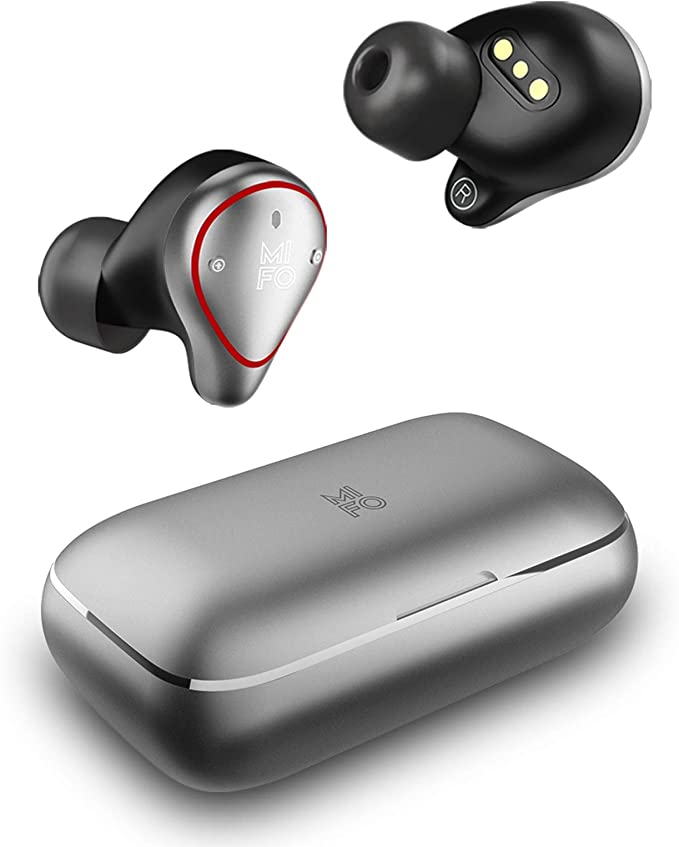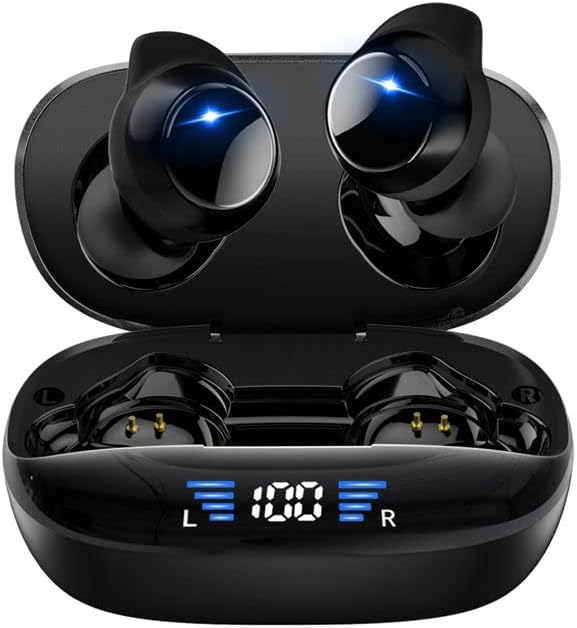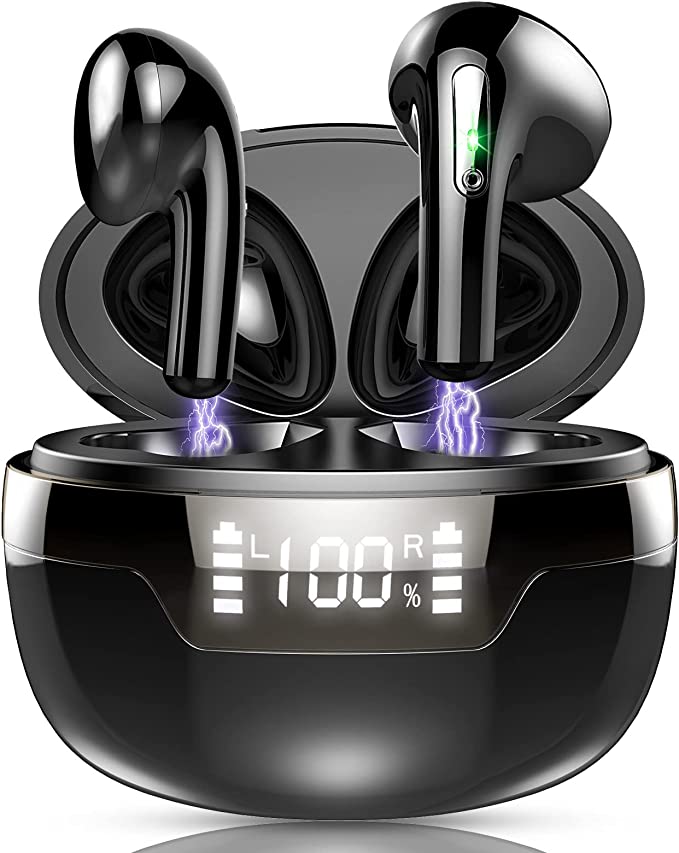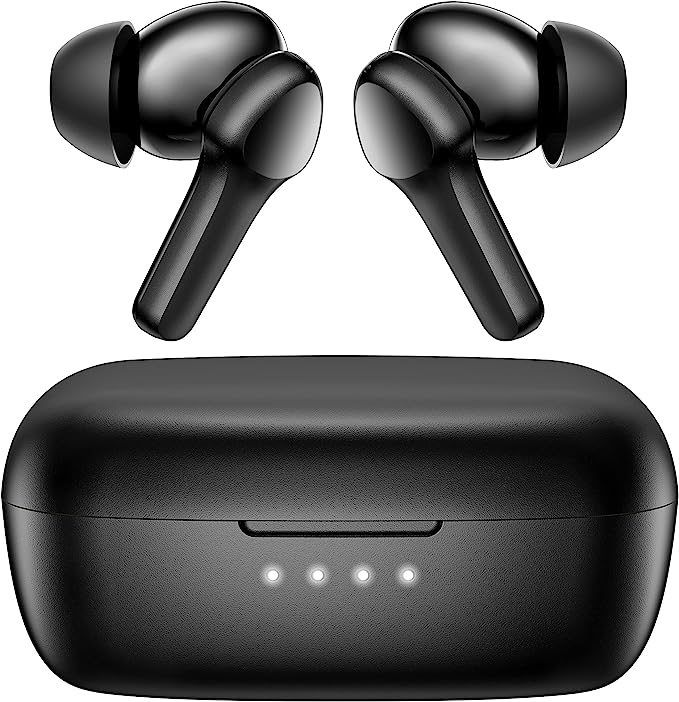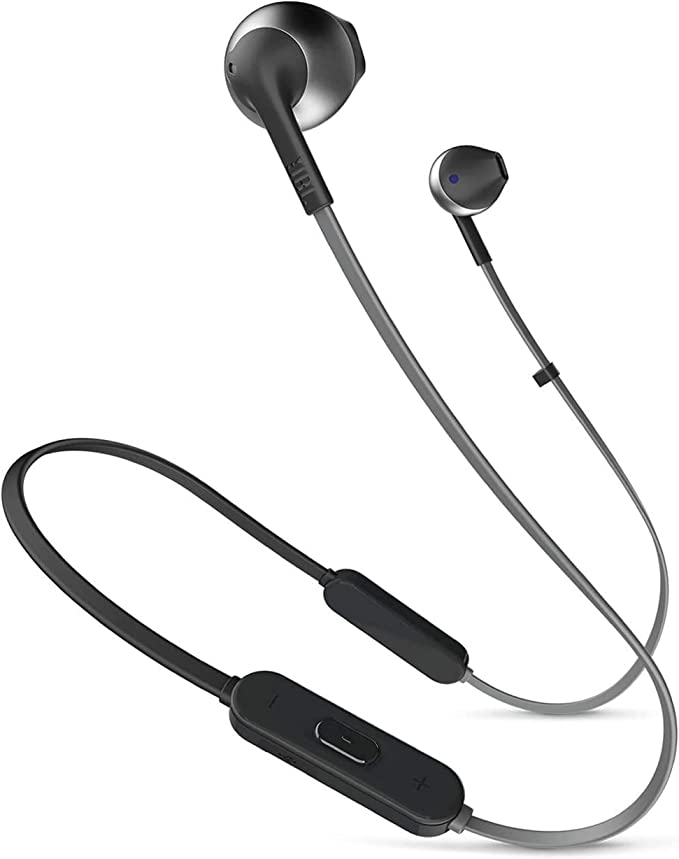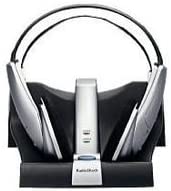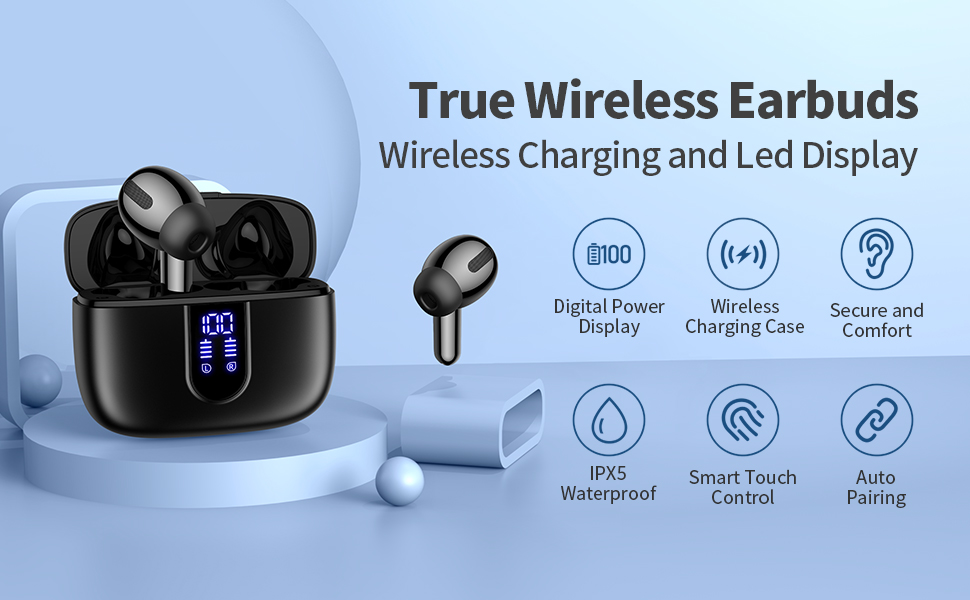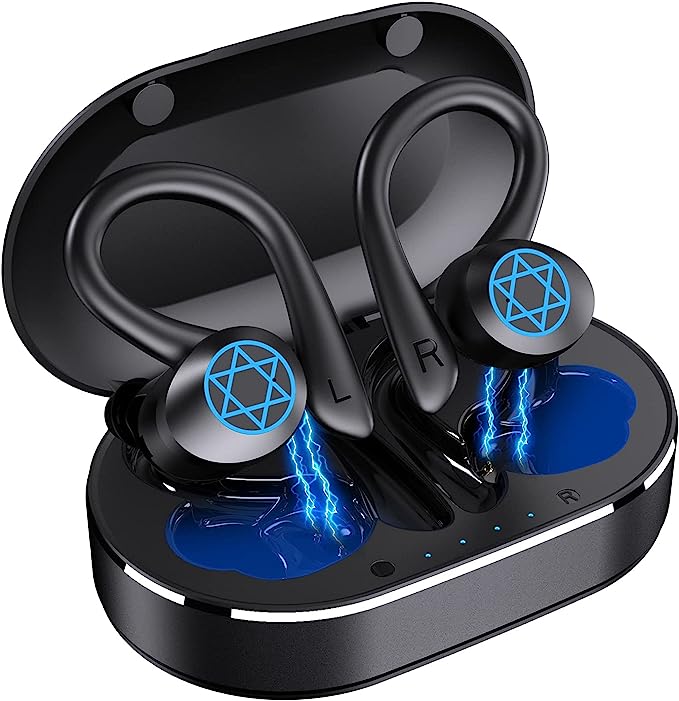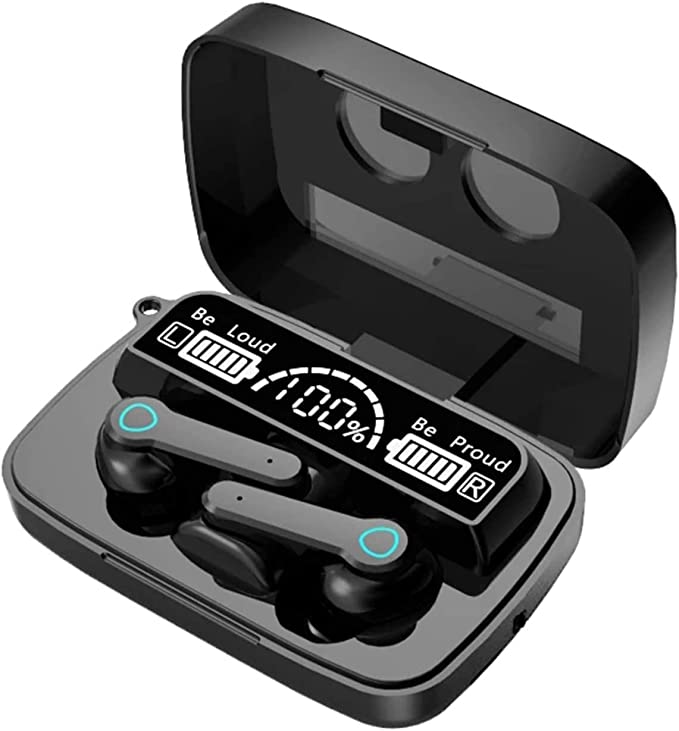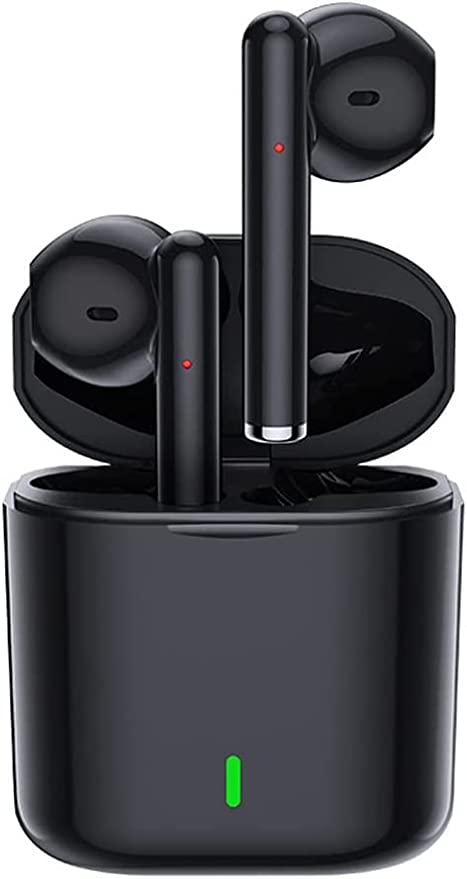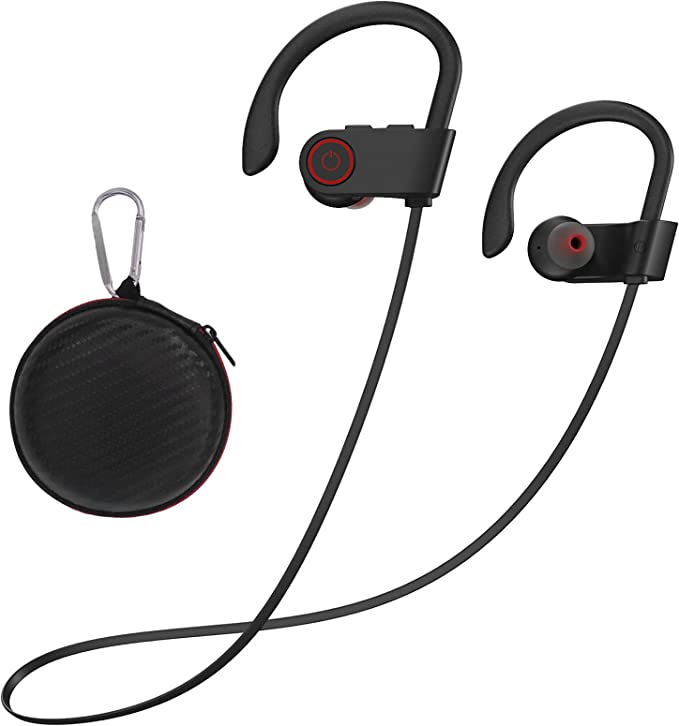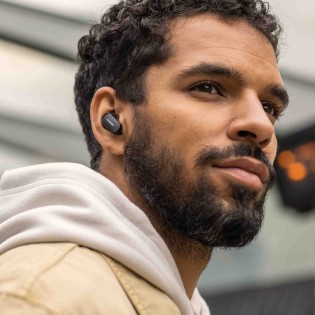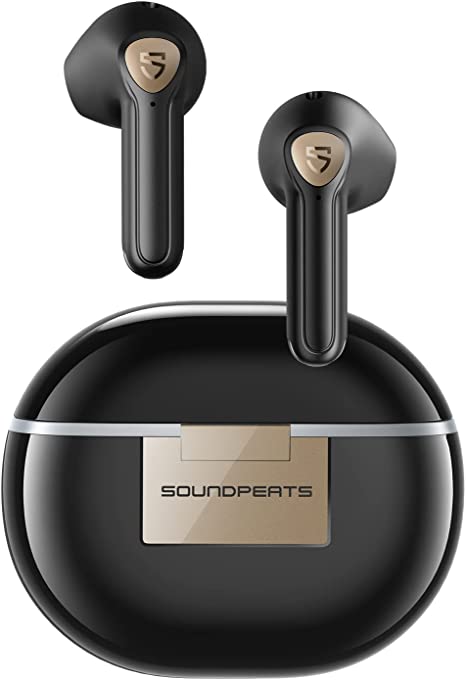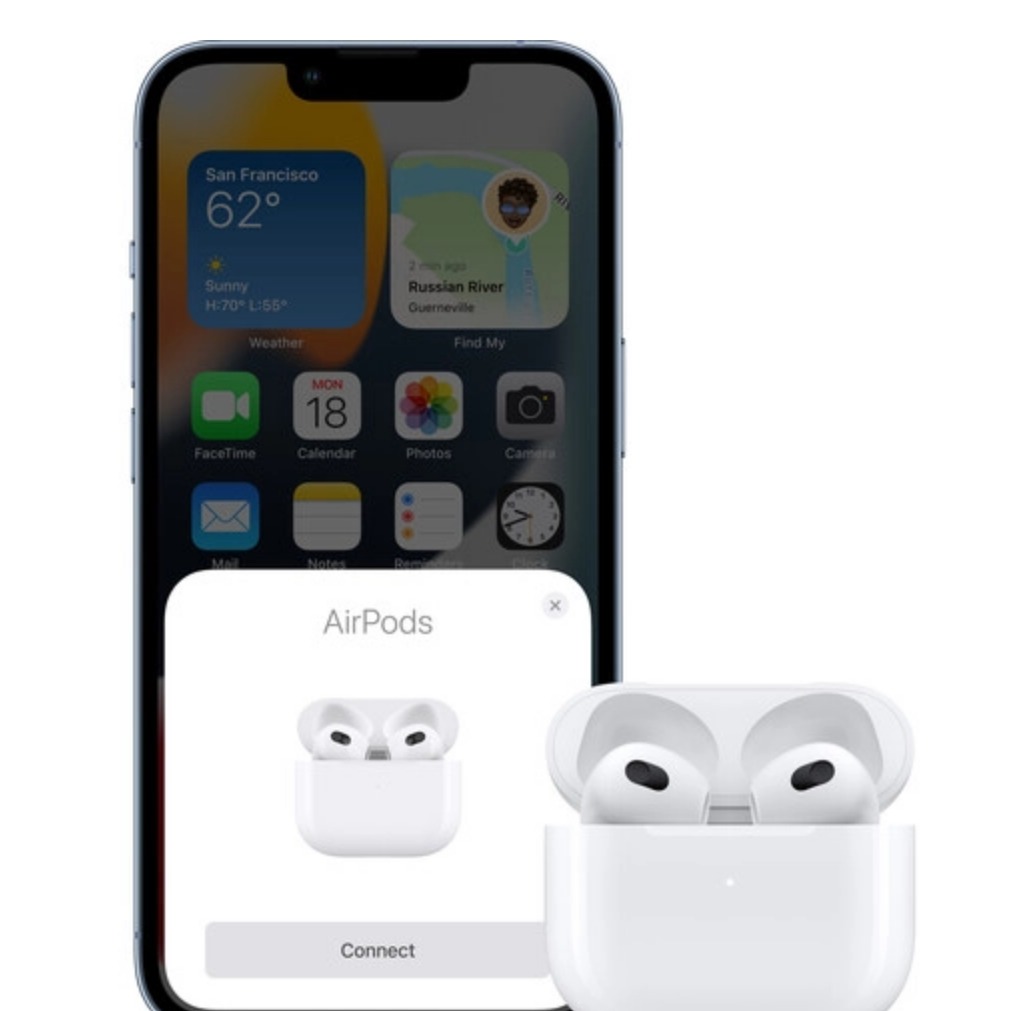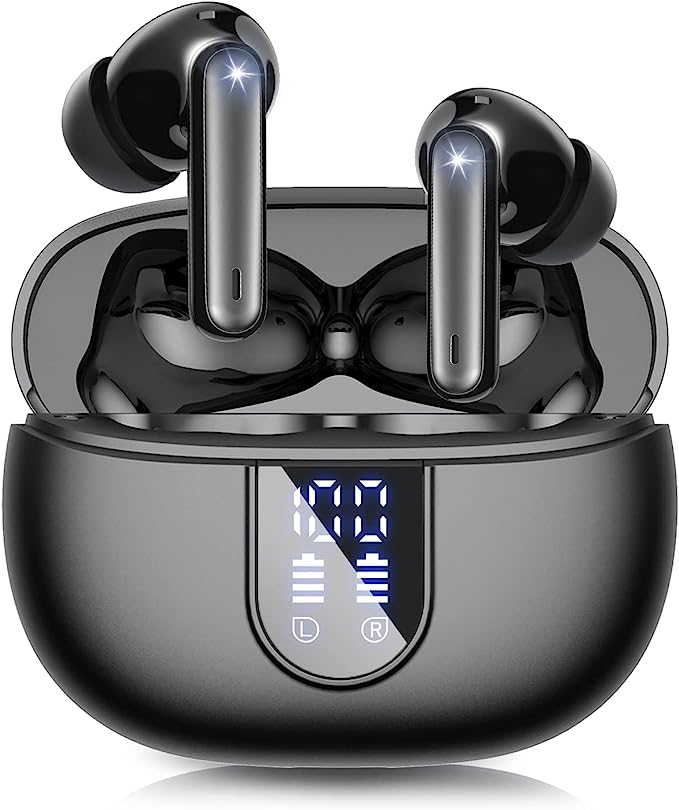Drsaec i07 Wireless Earbuds: Deconstructing Wireless Audio: Bluetooth 5.1, IPX7 Resilience, and All-Day Power Explained
Update on May 15, 2025, 10:11 a.m.
We live in an era of quiet revolution, a time when the delicate, often invisible, threads of technology weave themselves ever more deeply into the fabric of our daily lives. Consider, for a moment, the personal audio experience. Not so long ago, enjoying music on the go meant a tangle of wires tethering you to a device. Today, tiny wireless earbuds deliver rich soundscapes, keep us connected through calls, and accompany us through workouts and quiet moments alike, all with an air of effortless magic. But what’s behind this magic?
Let’s take a closer look, not at a product review, but through the lens of a specific example – the Drsaec i07 Wireless Earbuds. By exploring the technologies it claims to house, such as Bluetooth 5.1, a 13mm Large Size Speaker Driver for Hi-Fi Stereo Sound, an IPX7 waterproof rating, and a promise of 30 hours of playtime, we can unpack some of the fascinating science and engineering that power these ubiquitous companions. This journey isn’t just about understanding one device; it’s about appreciating the symphony of innovation that rests so lightly in our ears.

Whispers Across the Air: The Enduring Magic of Bluetooth 5.1
Imagine a world before invisible connections, a time when sharing information between devices over short distances without a cable seemed like pure fantasy. Then came Bluetooth, a technology whose name, surprisingly, harks back to a 10th-century Viking king, Harald “Bluetooth” Gormsson, famed for uniting Danish tribes. Just as King Harald united disparate regions, Bluetooth technology was conceived in the 1990s by engineers at Ericsson in Sweden to unite different devices – phones, computers, peripherals – with a universal short-range wireless standard.
At its core, Bluetooth allows devices to “talk” to each other using low-power radio waves, typically in the 2.4 GHz frequency band (a busy neighborhood also used by Wi-Fi and microwaves). To avoid interference and maintain a secure connection, Bluetooth employs a clever technique called Frequency Hopping Spread Spectrum (FHSS). Think of it as a secret, super-fast dance where the communicating devices continuously hop between dozens of different radio frequencies many times per second, making it difficult for other signals to disrupt their conversation. When you first pair your Drsaec i07 earbuds to your phone, they perform a digital “handshake,” establishing trust and agreeing on the hopping pattern. Subsequent connections, as the “Fast Auto Pairing” feature suggests, become almost instantaneous – like greeting an old friend.
The Drsaec i07 specifically features Bluetooth 5.1. Each iteration of the Bluetooth standard, managed by the Bluetooth Special Interest Group (SIG), brings improvements. Bluetooth 5.1 enhances aspects of its predecessors like Bluetooth 5.0, focusing on better connection stability, improved location services (though less critical for earbuds), and maintaining good power efficiency. The claimed 15-meter (nearly 50 feet) connection range for these earbuds is a testament to the robustness of modern Bluetooth, offering you the freedom to roam a bit from your audio source without your music stuttering or your call dropping. Different “profiles” within the Bluetooth standard dictate how devices perform specific tasks: A2DP (Advanced Audio Distribution Profile) is crucial for streaming high-quality stereo sound to your earbuds, while HFP (Hands-Free Profile) manages call audio and functions. For the user, all this complex underlying technology translates into a beautifully simple experience: untangled freedom, reliable audio, and the sheer convenience of earbuds that are ready when you are.

Crafting Your Personal Soundscape: Inside the 13mm Drivers and the Pursuit of Hi-Fidelity
How can such diminutive devices, nestled almost unseen in our ears, produce sound that can be both thunderously powerful and delicately nuanced? The answer lies primarily with the speaker drivers – the miniature engines of sound. The Drsaec i07 highlights its 13mm Large Size Speaker Driver, and in the realm of tiny audio transducers, size can indeed be a factor.
Most earbuds, likely including these, use dynamic drivers. Imagine a miniature version of a traditional loudspeaker. An electrical audio signal flows through a voice coil attached to a diaphragm (a thin, cone-like membrane). This coil is surrounded by a magnet. As the audio signal fluctuates, it creates a varying magnetic field in the coil, causing it to rapidly move back and forth, pushing and pulling the diaphragm. This vibration of the diaphragm displaces air, creating pressure waves that our ears perceive as sound. A larger diaphragm, like the 13mm one specified here, has a greater surface area. Theoretically, this allows it to move more air with each vibration, which can be particularly beneficial for reproducing lower frequencies – the “Powerful Bass Performance” mentioned in the product details. It can also contribute to a sense of fullness and effortlessness in the sound.
The term “Superior Hi-Fi Stereo Sound” often appears in audio product descriptions. “Hi-Fi,” or High Fidelity, is a concept that emerged in the mid-20th century with the goal of reproducing recorded sound as faithfully as possible to the original performance, with minimal distortion or coloration. While it can sometimes be used loosely in marketing, the technical pursuit of Hi-Fi involves careful engineering of drivers, enclosure acoustics (even within an earbud), and electronics. Achieving a “Truly Natural, Authentic Sound” is the holy grail for audio engineers.
For clear communication during calls, the Drsaec i07 mentions an “HD Mic with noise cancellation.” While the specifics of this noise cancellation aren’t detailed in the provided information, such systems for voice calls often use one or more microphones and Digital Signal Processing (DSP). The idea is to capture the user’s voice clearly while identifying and reducing steady background noises (like office hum or street traffic), so the person on the other end hears you, not your surroundings. Ultimately, the combination of capable drivers and clear microphone technology aims to create a versatile audio tool, capable of delivering both immersive musical escapes and crystal-clear connections to the world.

Braving the Elements: The True Story Behind IPX7 Waterproofing
Life is wonderfully unpredictable. One moment you’re on a sunny jog, the next you’re caught in an unexpected shower. Or perhaps an energetic gym session leaves you, and your earbuds, drenched in perspiration. It’s in these moments that the ruggedness of our tech is truly tested. The Drsaec i07 earbuds boast an IPX7 waterproof rating, a feature that offers significant peace of mind. But what do these letters and numbers actually signify?
The “IP” in IPX7 stands for Ingress Protection, and the ratings are defined by an international standard, IEC 60529. This system classifies the degree of protection provided by enclosures of electrical equipment against the intrusion of solid objects (like dust) and liquids. The first digit after “IP” relates to solid particle protection. In “IPX7,” the “X” means that the product has not been specifically rated for dust protection, or that this information isn’t provided. This is quite common for earbuds, where the primary concern for environmental damage is often liquid.
The crucial part here is the “7,” which denotes the level of liquid ingress protection. An IPX7 rating means the device is protected against the effects of temporary immersion in water under standardized conditions. Specifically, it should withstand being submerged in up to 1 meter (about 3.3 feet) of fresh water for as long as 30 minutes. This doesn’t mean you should go swimming with them (chlorine, saltwater, and prolonged submersion can introduce other issues), but it does mean they should comfortably survive that accidental drop into a sink, a thorough soaking in the rain, or the profuse sweat of an intense workout.
The product information also mentions a “nano-coating material” as part of its waterproofing. This is often a super-hydrophobic (water-repelling) coating applied to the internal components or the entire device. Imagine a surface so repellent to water that droplets bead up and roll off, much like water on a lotus leaf. This microscopic layer acts as an additional line of defense, helping to prevent any stray moisture that might breach the outer seals from damaging the sensitive electronics within. For the user, this robust IPX7 rating, potentially enhanced by a nano-coating, translates into greater durability and the freedom to use your earbuds without constantly worrying about a little water.

The Unseen Energy: Powering Your Playlists with Modern Batteries and USB-C
What fuels these tiny audio powerhouses for hours on end? The answer lies in the remarkable evolution of battery technology, specifically Lithium-ion and Lithium-Polymer batteries. These chemical marvels, whose foundational work earned scientists like John Goodenough, M. Stanley Whittingham, and Akira Yoshino the Nobel Prize in Chemistry in 2019, pack an incredible amount of energy into very small and lightweight packages. This high energy density is precisely what allows devices like the Drsaec i07 earbuds to operate for up to a claimed 6 hours on a single charge.
But the music doesn’t have to stop there. The “protable mini charging case” that accompanies the earbuds acts as a dedicated power bank, a pocket-sized lifeline for your audio. The product description suggests the case provides “an additional 5 charges,” leading to a total of about 30 hours of playtime before you need to find a wall outlet. When the earbuds are placed back into their magnetic cradles in the case, they automatically begin to recharge, drawing power from the case’s own internal battery.
When it’s time to recharge the case itself, the Drsaec i07 features an “upgraded USB-C charging port.” This is a significant step up from older micro-USB ports for several reasons. USB-C connectors are reversible, meaning you don’t have to fumble to plug them in the right way – a small but appreciated convenience. More importantly, the USB-C standard is designed to handle higher power delivery, which can mean faster charging times for the case (though actual speed also depends on the charger and cable used). To keep you informed, the case also includes an “LED Digital Display,” which, according to the description, helps check the power of both the wireless earbuds and the charging case at any time. This foresight prevents the unwelcome surprise of a dead battery just when you were settling in for a long commute or an extended listening session. The combination of long-lasting earbud batteries, a high-capacity charging case, and modern charging standards results in less charging anxiety and more uninterrupted listening pleasure.

The Lightest Touch: Navigating Your Audio with Intuitive Controls & Ergonomic Design
In our quest for seamless interaction with technology, the way we control our devices is paramount. Reaching for your phone to skip a track or answer a call can be cumbersome, especially when you’re active or your hands are occupied. The Drsaec i07 earbuds incorporate “touch control sensors,” allowing for a more direct and intuitive way to manage your audio experience.
This “Smart Touch Control” likely utilizes capacitive sensing technology. Your skin is electrically conductive. When you touch a specific area on the earbud designed as a sensor, your finger subtly changes the electrical capacitance at that point. The earbud’s internal electronics detect this change and interpret it as a command – a tap to play or pause, a double-tap to skip a song, or a long press to activate a voice assistant like Siri. This allows for a sleek, button-free design and enables a range of functions like power on/off, play/pause, skipping songs, enabling Siri, answering/hanging up calls, and adjusting volume, all with a simple touch.
Beyond control, comfort and fit are crucial for any wearable technology. The “ergonomic and sport redesign” of the i07 earbuds, as described, aims to ensure they “can fit and stay secured in ear canal even with intense movement.” This is often a complex challenge for designers, as human ears vary significantly in shape and size. To address this, the earbuds come with three different sizes of ear tips (S, M, L). Finding the right-sized tip is key not only for comfort during extended wear but also for achieving a good acoustic seal. A proper seal helps to improve bass response by preventing sound leakage and also provides a degree of passive noise isolation, reducing the intrusion of external sounds so you can focus on your audio. This blend of intuitive control and thoughtful ergonomic design contributes significantly to the overall user experience, making the technology feel less like a tool and more like a natural extension of your senses.

Conclusion: The Symphony of Science in Your Pocket
As we’ve journeyed through the various facets of the Drsaec i07 Wireless Earbuds – from the invisible dance of Bluetooth signals to the mechanics of sound reproduction, the resilience of waterproofing, the chemistry of long-lasting batteries, and the subtlety of touch controls – a common theme emerges: the remarkable convergence of diverse scientific principles and meticulous engineering within these astonishingly compact devices.
The Drsaec i07, like many of its contemporaries, isn’t just a product; it’s a testament to decades of research and innovation in fields like wireless communication, acoustics, material science, and electrochemistry. The convenience and joy they bring – the untethered run, the immersive podcast on a noisy train, the crystal-clear call to a loved one – are built upon layers of complex technology made to feel simple and intuitive.
By peeling back these layers, even just a little, we move beyond being passive consumers to become more appreciative and informed users. Understanding the “how” and “why” behind the features doesn’t diminish the magic; it enhances it, allowing us to marvel at the invisible symphony of science and engineering that we carry with us every day, tucked almost unnoticeably in our ears.

